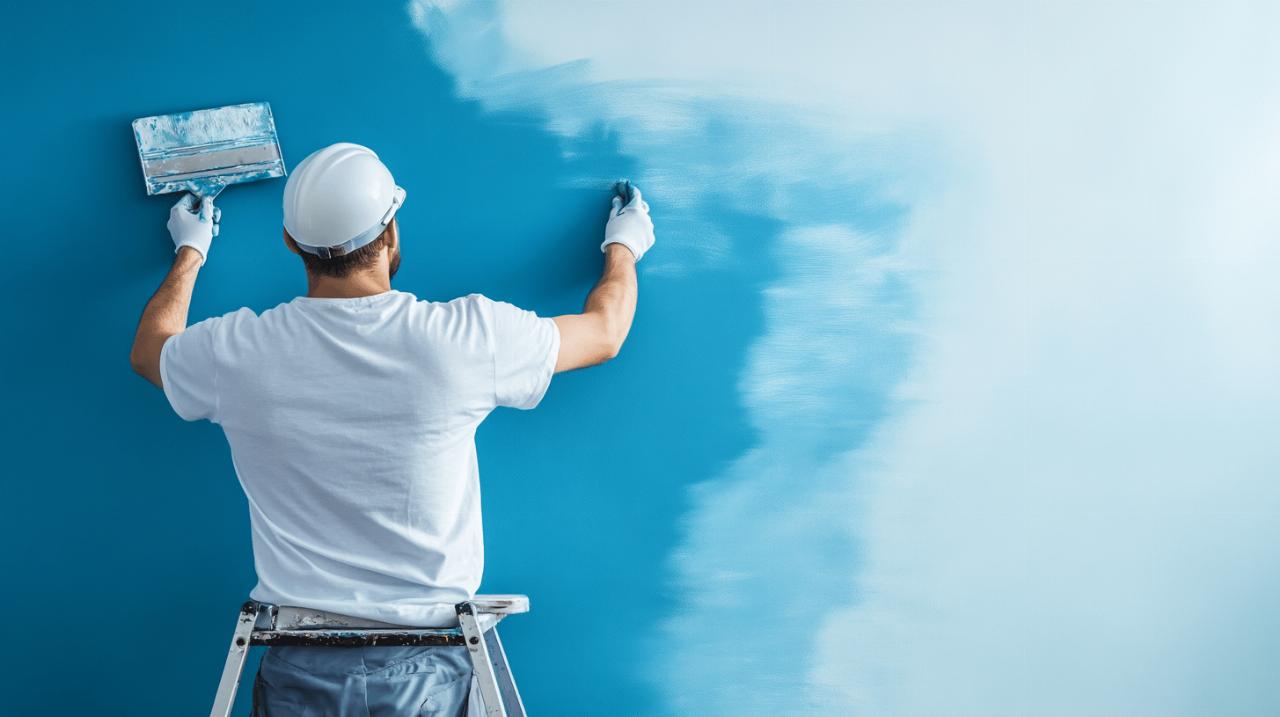Top Painting Tips to Enhance Your Home’s Aesthetic
Preparing Your Space for a Perfect Paint Job
Before diving into any painting project, proper preparation is crucial for achieving professional results. A well-prepared surface ensures paint adheres correctly and creates that flawless finish we all desire. Taking time to prepare your space properly will save you frustration and rework down the line, making it worth the initial investment of time and effort.
At the heart of any successful home renovation project is careful planning. Whether you’re refreshing a single room or transforming your entire property, painting remains one of the most cost-effective ways to enhance your home’s aesthetic appeal. For comprehensive resources on home improvement, https://www.kamerolli.it/ offers valuable insights for homeowners looking to maximise their property’s potential through strategic renovations.
Getting surfaces pristine and ready
Clean surfaces are non-negotiable for a quality paint job. Start by washing walls with a simple solution of warm water and baking soda – approximately 90g of baking soda mixed with warm water creates an effective cleaning solution that removes dirt, grease, and grime. After cleaning, ensure surfaces are completely dry before moving forward. Next, address any imperfections by filling holes, cracks, or dents with appropriate filler, followed by sanding once dry to create a smooth canvas. This meticulous preparation is what separates amateur results from professional finishes.
Selecting and organising your painting tools
Investing in quality tools makes a significant difference in your painting experience and results. High-quality brushes, rollers, and masking tape might cost more initially but will deliver superior finishes and can be used for multiple projects when properly maintained. Consider using innovative organisation methods like lining paint trays with cling film or tin foil for easy cleanup, or storing paint rollers in empty Pringles cans to keep them fresh between coats. Having dedicated areas for different tools creates an efficient workflow and prevents frustrating searches mid-project.
Choosing the Right Products for Lasting Results
The products you select dramatically impact the durability and appearance of your painted surfaces. With numerous options available, understanding which products suit your specific needs is essential for achieving optimal results and avoiding disappointing outcomes that might require early repainting.
Understanding different paint types and finishes
Different rooms require different paint finishes based on their function and exposure to moisture or wear. For living rooms and bedrooms, eggshell or satin finishes offer a subtle sheen that’s fairly durable while hiding minor imperfections. Kitchens and bathrooms benefit from semi-gloss or gloss finishes that resist moisture and allow for easy cleaning. Flat or matte finishes work well in low-traffic areas or on ceilings where reflections aren’t desirable. Eco-friendly paints with low or zero VOCs have also gained popularity, offering healthier indoor air quality without compromising on colour selection or durability.
Why quality primers make all the difference
Primers serve as the foundation for your paint job, creating uniform surfaces that promote even paint absorption and superior adhesion. They’re especially important when painting over darker colours, covering stains, or working with porous surfaces like new drywall. A quality primer can significantly reduce the number of topcoat layers needed, ultimately saving both time and paint. Though it might seem tempting to skip this step, doing so often leads to uneven finishes, poor colour representation, and decreased longevity of your paint job.
Mastering proper painting techniques
The application technique you employ can make or break your painting project. Even with perfect preparation and premium products, improper application techniques can result in streaks, uneven coverage, or visible brush marks that detract from the final appearance of your space.

The Art of Cutting In and Maintaining Wet Edges
Cutting in refers to using a brush to paint along edges, corners, and trim before tackling larger surfaces with a roller. This technique requires a steady hand but creates crisp, clean lines that define the space professionally. When painting larger areas, maintaining a wet edge is crucial – this means slightly overlapping each stroke with the previous one while the paint remains wet. This technique prevents visible lines or lap marks and ensures a seamless, uniform finish across the entire surface.
Applying multiple thin coats for professional results
Professional painters swear by applying multiple thin coats rather than one thick layer. Thin coats dry more evenly, adhere better to surfaces, and are less likely to drip or sag during application. Though this approach requires patience and time between coats for proper drying, the superior results are well worth the wait. Allow each coat to dry completely according to the manufacturer’s recommendations before applying subsequent layers to prevent peeling, bubbling, or other adhesion issues that might compromise your finished project.
Colour selection and testing strategies
Selecting the perfect colour palette can feel overwhelming with countless options available. The right colours can transform a space, creating the desired mood and enhancing architectural features, while poor colour choices might leave rooms feeling uncomfortable or disjointed.
Evaluating paint colours under various lighting conditions
Paint colours appear dramatically different depending on lighting conditions. A shade that looks perfect in the store might appear entirely different in your home. Always test potential colours directly on your walls and observe them throughout the day as natural light changes. Create sample areas of at least one square foot for each potential colour and view them during morning, afternoon, and evening hours. This thorough testing process helps avoid costly mistakes and disappointment after painting entire rooms.
Creating cohesive colour schemes throughout your home
While each room can have its own character, maintaining some cohesion throughout your home creates a harmonious flow between spaces. Consider soft neutral tones like whites, creams, and beiges for versatility in living areas, while bedrooms might benefit from warm neutrals or calming pastels like blush pink or powder blue. Kitchens often shine with light, reflective colours that enhance brightness, while home offices might benefit from light grays or soft greens that promote focus and tranquility. Current trends include earthy tones, jewel tones, and creative approaches like colour drenching or two-tone walls for visual interest.
Post-painting care and maintenance
The care you provide after completing your painting project significantly affects how long your surfaces maintain their beauty. Proper cleanup and ongoing maintenance extend the life of both your tools and your freshly painted surfaces.
Proper tool cleaning and storage practices
Clean your tools immediately after use to maintain their quality and extend their lifespan. For water-based paints, brushes and rollers can be cleaned with warm, soapy water or even dishwasher tablets in stubborn cases. Oil-based paints require appropriate solvents for effective cleaning. After cleaning, reshape brush bristles and allow tools to dry completely before storage. Storing brushes upright prevents bristle damage, while rollers can be kept in airtight containers to prevent drying out. Properly maintained quality tools can serve you for many projects, making them worth the initial investment.
Protecting and maintaining your freshly painted surfaces
Allow paint to cure fully before reintroducing furniture or hanging artwork – this typically takes several days depending on humidity levels and paint type. When moving furniture back, consider using pool noodles as padding to prevent scuffs and scratches. For ongoing maintenance, dust walls regularly with a soft cloth or vacuum with a brush attachment. Clean stains promptly using mild soap and water for washable finishes. Keep refillable paint pens with leftover paint for quick touch-ups of inevitable scuffs and marks. With proper care, your painted surfaces will maintain their fresh appearance for years to come.


